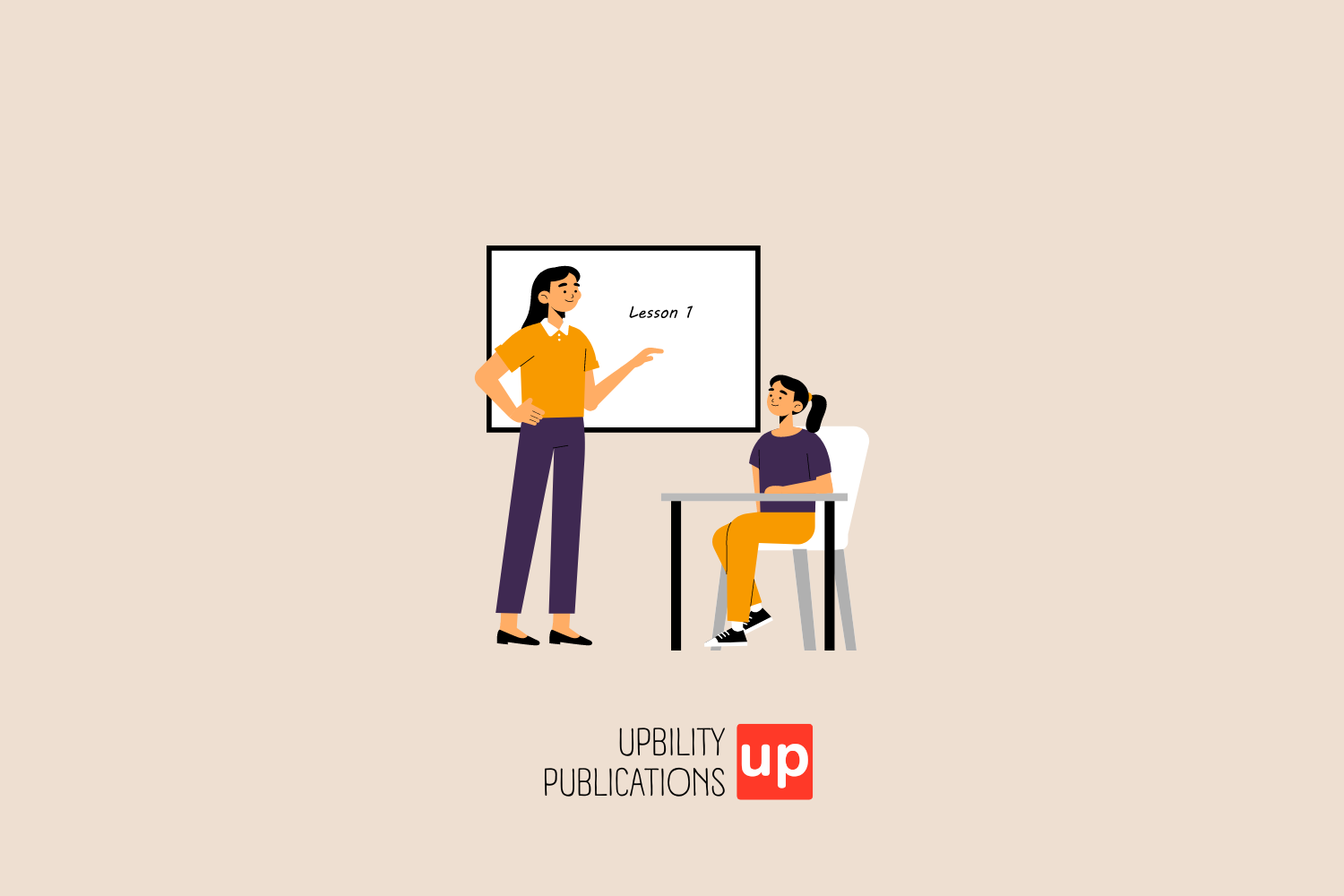Want to teach ADHD students effectively? This article covers key strategies, like physical activity incorporation and assistive technology, to help ADHD students succeed.
Key Takeaways
- Understanding ADHD and its symptoms is crucial for developing effective teaching strategies that support students’ academic and emotional success.
- Incorporating physical activity, structured routines, and clear visual aids can enhance engagement and focus for students with ADHD.
- Collaboration with parents, use of assistive technology, and implementing self-monitoring practices are essential for creating a comprehensive support system for ADHD students.
Understanding ADHD and Its Impact on Learning

Attention deficit hyperactivity disorder (ADHD) is a neurodevelopmental disorder characterized by inattention, hyperactivity, and impulsivity. These symptoms can make it challenging for children with ADHD to focus, pay attention, and listen, thereby significantly hindering their academic performance. Recognizing these challenges is essential for developing effective teaching strategies for ADHD students.
ADHD affects a student’s ability to stay on task and pay attention to lectures. Students with ADHD often find it difficult to follow along in class, which can lead to frustration and a lack of engagement. Additionally, these students may face other conditions such as learning difficulties, motor impairments, anxiety, and depressive disorders. Identifying these co-occurring conditions is vital for offering comprehensive support.
The main aim of supporting ADHD students in the classroom is to help them achieve their full academic potential. It also focuses on encouraging positive social and emotional development. Implementing targeted interventions and understanding the unique challenges faced by these students enable teachers to support their academic and personal success.
Common ADHD Symptoms in Students
Common ADHD symptoms in students include:
- inattention
- poor concentration
- disorganization
- difficulty completing tasks
- forgetfulness
- misplacing items
- hyperactivity
- impulsivity
These symptoms can significantly impact a student’s academic performance, so teachers should recognize and address them early on.
Inability to pay attention is one of the most prominent symptoms of ADHD, and it can severely affect academic success. Children with ADHD often struggle to control their impulses, which can lead to problem behaviors in the classroom. This impulsivity can disrupt not only their own learning process but also that of other students.
Students with ADHD also frequently have difficulty sitting still, which can further impact their concentration and engagement in class. Grasping these symptoms and their effects on school-aged children is key to creating effective teaching strategies for ADHD students.
Incorporating Physical Activity in Lessons

Incorporating physical activity into lessons can be a game-changer for students with ADHD. Physical activity benefits these students by improving attention, executive functions, and motor skills. Engaging in intense aerobic exercise can enhance brain structure and function, making it easier for children with ADHD to focus and learn.
Physical activity helps release dopamine and endorphins, enhancing focus and cognitive clarity. Teachers can incorporate short workouts, dance routines, and simple stretching exercises into their lessons to help students balance mental exertion with physical effort. These activities not only break the monotony of traditional classroom settings but also keep ADHD students engaged and attentive.
Non-competitive physical activities can be especially beneficial for students uncomfortable in high-pressure situations. Creating a learning environment that includes movement helps ADHD students stay focused and enhances their academic performance.
Establishing Classroom Routines and Rules
Consistency and structured routines play a critical role in managing children with ADHD. A well-structured daily routine that includes predictable transitions helps ADHD students feel secure and focused. Implementing structured programming and positive reinforcement can also support the management of ADHD behaviors in the classroom.
Creating a classroom code of conduct reinforces expected behaviors and helps set clear boundaries for ADHD students. Involving students in the creation of classroom rules can increase their accountability and encourage them to adhere to these rules. This collaborative approach not only promotes a sense of responsibility but also fosters a positive learning environment.
Establish classroom routines and clear classroom rules is a crucial teaching strategy for ADHD students. Providing a consistent structure helps these students manage their behaviors and focus on academic strategies tasks.
Visual Aids for Better Understanding
Visual aids can significantly enhance the understanding and behavior of ADHD students. Visual cues help these students follow instructions and understand classroom rules. Visual aids like charts and reminders support students in developing self-monitoring abilities.
Color-coding materials for each subject can aid ADHD students in staying organized. Providing both verbal and written instructions helps these students better comprehend and retain directions. Simplifying and clarifying instructions is also beneficial in helping ADHD students complete tasks efficiently.
Effective strategies for ADHD students include providing concise and clear instructions to minimize confusion. By using visual aids, teachers can create a more inclusive and supportive learning environment for ADHD students.
Using Assistive Technology to Support Learning

Digital tools play a critical role in tailoring education to match the individual needs of ADHD students. Organizational tools like homework folders help ADHD students manage tasks and reduce distractions. Apps like Time Timer assist ADHD students with time management, helping them understand and manage their time effectively.
Text-to-speech applications can enhance reading and comprehension for students with attention challenges. Voice Dream Reader, for example, allows students to listen to text from various formats, making reading more accessible. Mind mapping tools like MindNode help ADHD students organize their thoughts visually, aiding the writing process.
Educational gamification can lead to marked improvements in academic performance and executive functioning skills for ADHD students. Incorporating assistive technology into the classroom equips ADHD students with the tools they need to succeed academically.
Implementing Mindfulness Practices
Mindfulness training for children with ADHD has shown reductions in both inattention and hyperactivity symptoms as reported by parents. Practicing mindfulness enables children to enhance their self-control and awareness, which can mitigate impulsive reactions.
Mindfulness exercises can be structured to enhance compliance and involvement from children, using reward systems. Mindfulness training has been adapted specifically for children with ADHD to address their unique challenges and behavioral patterns.
Implementing mindfulness practices in the classroom helps ADHD students stay focused and improves their overall behavior. These practices not only benefit the students academically but also contribute to their emotional and social well-being.
Encouraging Self-Monitoring Techniques
Self-monitoring aids children in identifying their own behaviors, facilitating greater awareness and control over their actions. The practice of self-monitoring can enhance critical executive functioning skills such as attention, problem-solving, and persistence.
Recording behaviors through tools like checklists allows students to track their progress and make necessary adjustments. Gamified personal development tools can help ADHD students track their progress and set achievable goals in an engaging format.
Setting specific goals for self-monitoring practices can help students focus on improving targeted behaviors. Self-monitoring techniques empower ADHD students to take control of their learning and behavior.
Gamifying the Learning Process

Gamification improves engagement, motivation, and focus in ADHD students. Integrating game elements into learning can significantly enhance motivation and engagement for ADHD students. Gamification can aid ADHD students by breaking tasks into game-like challenges, making completion feel more rewarding.
Games make lessons interactive and enjoyable for ADHD students. Gamifying the learning process creates a dynamic and engaging classroom environment that supports ADHD students’ unique needs.
Providing Immediate Feedback and Positive Reinforcement
Children with ADHD respond best to immediate positive reinforcement. Immediate positive feedback helps maintain their focus and motivation. Efficient reward systems for ADHD students include on-the-spot praise, instant tokens for privileges, and behavior and performance charts.
Behavioral classroom management techniques promote positive behaviors and reduce negative ones by implementing a reward system. Children with ADHD benefit significantly from immediate and specific praise for positive behavior.
Consistency in behavioral expectations aids ADHD students in understanding what behaviors will be rewarded. Immediate feedback and positive reinforcement encourage good behavior and academic success in ADHD students.
Promoting Peer Interaction and Support
Collaborative activities help ADHD students develop essential social skills and improve their self-esteem. Positive social interactions through structured peer support can reduce feelings of loneliness in ADHD students. Peer interaction through group work can enhance the social development of students with ADHD.
Involvement in buddy systems allows students with ADHD to collaborate, fostering accountability and teamwork. Encouraging shared responsibilities in group settings can create a sense of belonging for students with ADHD. Promoting peer interaction and support fosters a supportive learning environment for ADHD students.
Collaborating with Parents and Specialists
Open communication between parents and teachers is vital for supporting children with ADHD. Daily report card communication can help track ADHD students’ progress and foster collaboration. Two-way communication builds a supportive network around the child, enhancing educational outcomes. Effective partnerships between teachers and parents significantly improve outcomes for children with ADHD.
Collaboration with ADHD specialists creates an inclusive environment and addresses unique student needs. By working together, parents, teachers, and specialists can provide comprehensive support for ADHD students.
Accommodations for ADHD Students

Examples of accommodations available for students with ADHD include IEPs, 504 Plans, extended time on tests, modified assignments, and preferential seating. IEPs and 504 Plans play a crucial role in providing accommodations to help manage ADHD in the school setting.
These accommodations aim to create a supportive learning environment that addresses specific needs while helping ADHD students perform to the best of their abilities. Students with ADHD may struggle with disorganization and frequently forget or misplace their belongings, affecting their learning process.
Accommodations tailored to ADHD students’ needs help them achieve academic success and enhance their overall school experience.
Clear Instructions and Advance Notice
Providing clear and concise instructions helps ADHD students understand what is expected of them. Clear instructions assist ADHD students in staying organized and prepared for school activities.
Organizational training teaches ADHD students time management, planning skills, and how to organize school materials. Advance notice of changes and upcoming tasks helps these students feel more prepared and less anxious.
By providing clear instructions and advance notice, teachers can create a more structured and supportive learning environment in the school environment for ADHD students while teaching children.
Summary
In sum, teaching ADHD students effectively requires a multifaceted approach. Understanding ADHD and its symptoms, incorporating physical activity, establishing routines, using technology, implementing mindfulness, encouraging self-monitoring, gamifying lessons, providing immediate feedback, promoting peer interaction, collaborating with parents and specialists, and offering accommodations are all crucial strategies.
By embracing these strategies, teachers can create an inclusive and supportive learning environment that enables ADHD students to succeed academically and socially. Remember, every student has the potential to shine with the right support and understanding.
Frequently Asked Questions
What are the common symptoms of ADHD in students?
Students with ADHD commonly exhibit inattention, poor concentration, disorganization, forgetfulness, and impulsivity. These symptoms can significantly impact their academic performance and daily functioning.
How can physical activity benefit ADHD students in the classroom?
Physical activity significantly benefits ADHD students in the classroom by enhancing their attention, executive functions, and motor skills. This increase in focus and cognitive clarity stems from the release of dopamine and endorphins during exercise.
Why is it important to establish classroom routines and rules for ADHD students?
Establishing classroom routines and rules is crucial for ADHD students as it creates a predictable environment that enhances their security and focus. This structure effectively aids in managing ADHD behaviors, helping them thrive academically and socially.
How can assistive technology support learning for ADHD students?
Assistive technology significantly supports learning for ADHD students by using digital tools such as organizational apps, text-to-speech applications, and mind mapping tools, which enhance task management, reading comprehension, and visual organization. This tailored approach fosters a more effective learning environment for these students.
What role do parents and specialists play in supporting ADHD students?
Parents and specialists play a crucial role in creating a supportive network for ADHD students, enhancing educational outcomes through effective communication and collaboration. Their combined efforts address the unique needs of each child.
Original content from the Upbility writing team. Reproduction of this article, in whole or in part, without credit to the publisher is prohibited.









